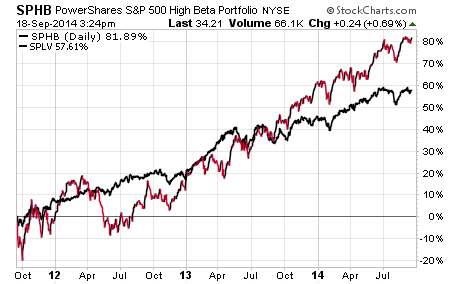A little over a year ago I wrote a well-received article about the 5 mistakes to avoid with your ETF portfolio. The tips ranged from not falling in love with your ETFs to trade execution and tax consequences.
Fast forward to today and the ETF universe has expanded in a number of ways that warrant some additional advice in a number of key areas. I share these thoughts as a consequence of my daily research and experience so that you can be better prepared to analyze your holdings and make informed decisions about your ETF portfolio.
Index Construction Is Imperative
The single biggest driver of your returns in each diversified ETF you purchase will be how the index is constructed. That is not to say fees, taxes, and liquidity aren’t important as well. However, the makeup of the underlying holdings will ultimately determine how the portfolio reacts under various conditions and if any outsized holdings will impact returns.
With more than 1,650 exchange-traded products currently available to investors, the slicing and dicing of various indexes is almost limitless. There are ETFs that focus on sectors, industries, market cap, equal weight, fundamental characteristics, momentum data, volatility screens, and a host of other traits.
A great example is the difference between owning the PowerShares S&P 500 High Beta (NYSE:SPHB and PowerShares S&P 500 Low Volatility (NYSE:SPLV. A look at a 3-year chart of these two widely varying indexes shows how strongly they have diverged as a result of their underlying asset allocation.

SPHB selects 100 stocks within the S&P 500 Index with the highest sensitivity to market changes, while SPLV selects 100 stocks with the lowest price fluctuations of their peers. As you can see on the chart, SPHB has outperformed in a strongly rising market because of its exposure to growth-oriented sectors. However, this ETF was susceptible to a great deal more volatility over the years. This is particularly noticeable during 2012 when stocks went through a hiccup and the low volatility index continued to show slow and steady progress.
My recommendation is to carefully analyze the makeup of the holdings along with their weightings within each ETF in your portfolio. Make note of any positions that are overly skewed to a specific company or sector because these will have an outsized pull on the performance of the fund. In addition, don’t be afraid to access targeted ETFs that may have a slightly higher expense if you are confident in the trend, investment thesis, or risk profile of the fund.
Be Mindful of Active ETFs Charging Higher Fees
The recent trend of new ETF issuance this year has shown a propensity for actively managed funds that charge a significantly higher expense ratio than passively managed indexes. Often times these expenses can reach as high as 1.00% or more for a perceived advantage in research, execution, or risk management.
While I am generally a fan of actively managed funds that offer a unique value proposition, there is a concern that several broad-based equity ETFs that tout superior performance will ultimately turn out to be closet-index funds. This becomes even more egregious when they charge 7 to 10 times the fees of a Vanguard Bond (ARCA:BIV) or Schwab (NYSE:SCHH) equivalent.
The Calamos Focused Growth ETF (NASDAQ:CFGE) is an example of one new fund that caught my eye as a mutual fund crossover strategy with cautionary signs as a result of its 0.90% net expense ratio.
It’s worth mentioning that actively managed ETFs will experience periods of outperformance and underperformance based on their deviation from an underlying benchmark. Investors considering these options should carefully weigh the risks and concomitant higher fees associated with an active strategy. My hope is that the majority outperforms and earns their keep.
Chasing Performance Can Be Dangerous
Chasing the best performing sectors can be a dangerous game. Consider that in 2013 the top performing sector was the SPDR Consumer Discr. Select Sector (ARCA:XLY)), which has now fallen to the bottom of the rankings this year amid lackluster support. XLY is sitting on meager gains of just 3.53% so far in 2014.
Conversely, the Utilities Select Sector SPDR (XLU) was the worst large-cap sector last year and has re-emerged as one of the top sector strategies along with healthcare in 2014.
This serves as a stark reminder that sector rotation can be difficult given the fluid nature of the markets and dynamic shifts that occur in relation to interest rates, volatility or perception. Typically you only identify the best performing sector after the move has been made, which makes additional marginal gains all the more difficult.
Most investors should build core positions around diversified vehicles that offer multi-sector exposure with minimal fees. They can then add tactical holdings in specific areas of the market they feel offer attractive value or reward characteristics. Stop losses can also be used to minimize draw down and define your total risk in any given position.
The Bottom Line
Reviewing these tips on a regular basis will help you stay sharp and disciplined with your investment decisions. No matter how your portfolio is constructed, careful analysis of your existing ETF holdings and new opportunities will enhance your chances of a successful outcome over the long-term.
Disclosure: FMD Capital Management, its executives, and/or its clients may hold positions in the ETFs, mutual funds or any investment asset mentioned in this article. The commentary does not constitute individualized investment advice. The opinions offered herein are not personalized recommendations to buy, sell or hold securities.
